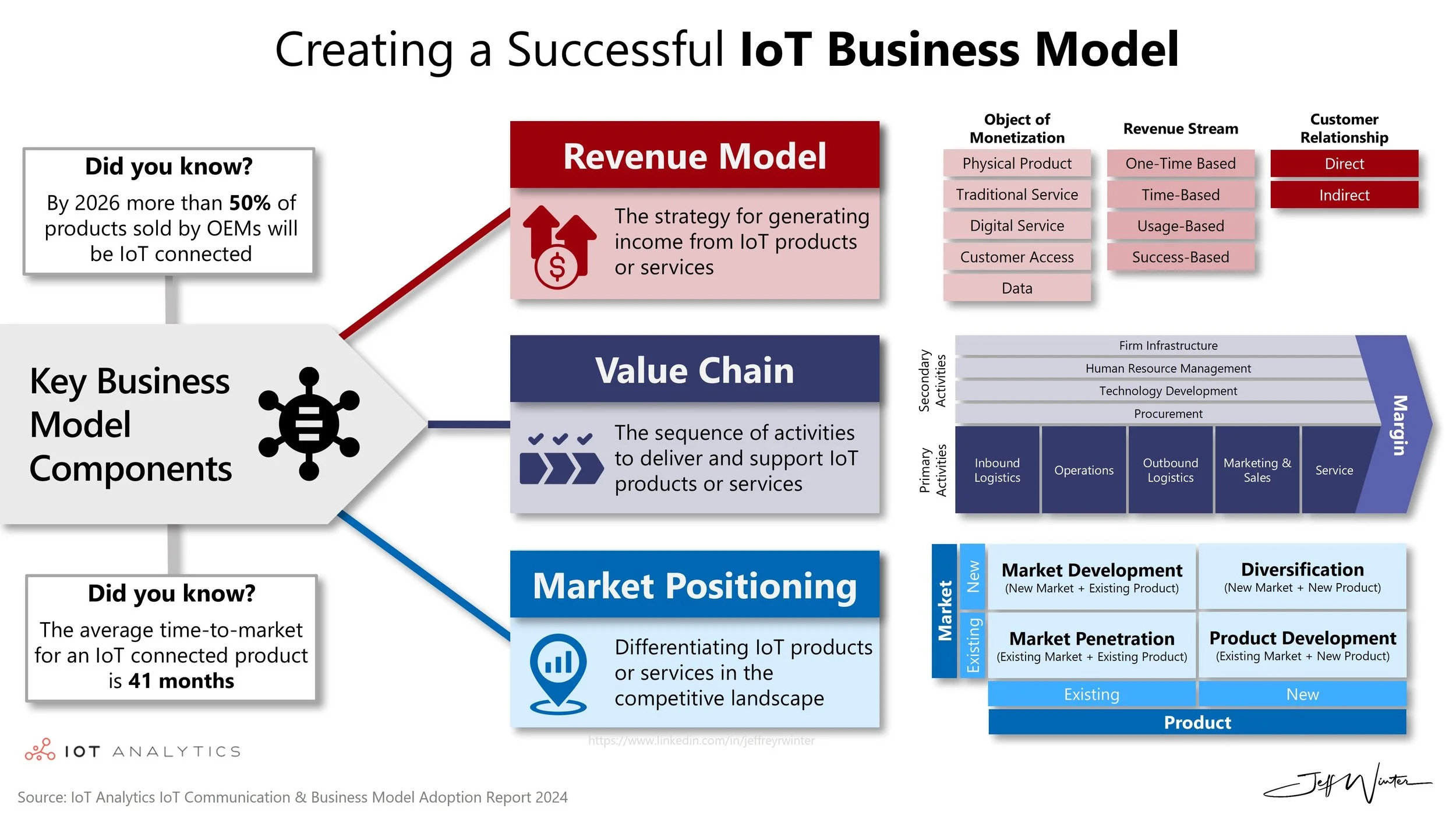Creating a Successful IoT Business Model
Consider this: According to IoT Analytics, we are expected to be surrounded by a staggering 27 billion connected devices by 2025, which is more than three connected devices for every human on the planet! It's these devices that are creating an unprecedented revolution in data generation. From smart homes and wearables to connected cities and industries, IoT is not just changing the game; it's creating an entirely new playing field. This explosion of connected devices is not only reshaping our daily lives but also offering businesses across sectors an opportunity to innovate and transform.
The State of Connected IoT Products:
By 2026, more than 50% of all products sold by OEMs will be IoT Connected.
The number one benefit of connected IoT projects is generating deep insights into customer usage of their products and services (67%).
The number two benefit of connected IoT projects is better management of customer needs (61%).
The average time-to-market for new connected IoT products is 41 months.
Most Common Business Innovations with Connected IoT products:
Leasing out equipment - Equipment is leased with a recurring fee and an upfront investment.
Offering performance guarantees - Contractual obligations are made to meet service levels or else potentially face penalties.
Offering software add-ons without monetizing them - New services/software are made available for free.
Offering software add-ons and increasing equipment price - New services/software are made available, and the equipment price increases.
Offering and monetizing software add-ons - New services/software are made available and monetized.
Upselling software/services based on actual product usage - Observe customer product usage and offer relative add-ons.
Success-based pricing of equipment - Share outcomes tied to specific KPIs with the customer.
EaaS/Pay per use - The customer pays for the utilization of the equipment, based either on runtime (hours of use of the equipment) or outcome (paying per unit produced with the equipment).
Three new considerations for OEMs looking to leverage IoT
Develop and Monetize Unique Data-Driven Insights: Successful OEMs can gain a competitive edge by harnessing the vast amounts of data generated by IoT devices to create unique, actionable insights. For instance, 67% of successful companies highlight AI-based predictive maintenance as crucial, compared to only 40% of less successful companies. By developing advanced analytics and algorithms, OEMs can offer tailored solutions that address specific customer needs, such as predictive maintenance and workflow optimization. These data-driven insights can be monetized through premium software add-ons, subscription services, or bespoke consulting engagements, providing both immediate value to customers and a recurring revenue stream for the OEMs.
Enhance Customer Relationship Management through IoT Integration: Integrating IoT data with CRM and ERP systems allows OEMs to offer a seamless and personalized customer experience. According to the data, 62% of successful companies ensure their CRM systems have access to IoT product usage data, and 57% do the same for their ERP systems. In contrast, only 42% of less successful companies achieve this level of integration. By understanding customer usage patterns, OEMs can proactively address potential issues, recommend relevant software add-ons, and optimize service contracts. This integration not only improves customer satisfaction and loyalty but also enables OEMs to anticipate and respond to market trends more effectively, enhancing their sales and marketing strategies.
Foster Strategic Partnerships and Co-Development Initiatives: OEMs should seek to establish strategic partnerships and co-development initiatives that leverage unique resources and expertise. Successful companies often prioritize understanding customer hurdles in service adoption, assigning a higher significance rating to these concerns. This customer-centric approach can be strengthened through collaborations with technology firms, research institutions, and industry leaders. By partnering with these entities, OEMs can gain access to cutting-edge technologies, unique data sets, and innovative algorithms, enhancing their product offerings. These partnerships can accelerate the time-to-market for new features and enable the development of highly specialized solutions, ensuring continuous innovation and competitive advantage in the rapidly evolving IoT landscape.
By focusing on developing data-driven insights, integrating IoT data with CRM and ERP systems, and fostering strategic partnerships, OEMs can effectively leverage IoT to drive innovation, enhance customer value, and achieve greater commercial success.
References:
IoT Analytics - IoT Commericialization & Business Model Adoption Report 2024: https://iot-analytics.com/how-to-create-a-successful-iot-business-model-insights-from-early-innovators/

